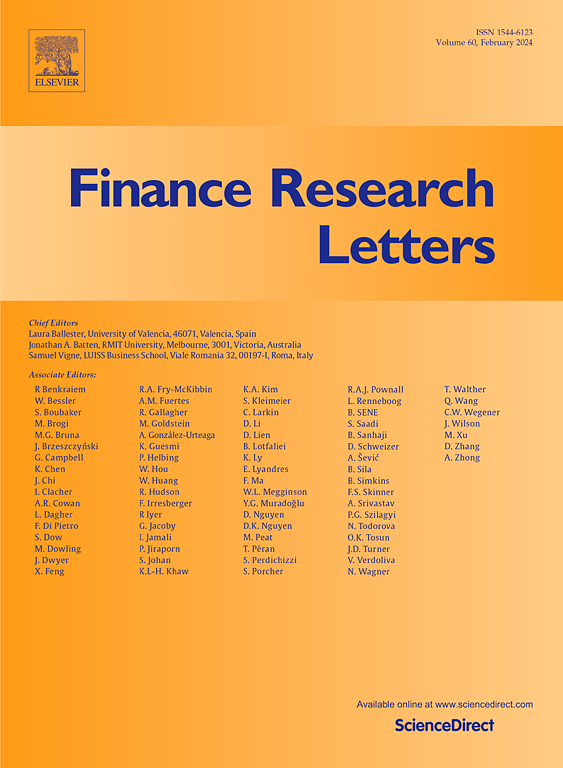绿色债券发行溢价效应与投资者激励效应
IF 6.9
2区 经济学
Q1 BUSINESS, FINANCE
引用次数: 0
摘要
本研究以2017年1月至2023年12月中国发行的7862只绿色债券和传统债券为样本,采用OLS模型进行实证分析。研究发现,与普通债券相比,绿色债券在一级市场上具有显著的溢价,其信用利差显著降低,从而为企业提供了一种更经济有效的融资方式。具体而言,绿色金融债券的信用利差最小,表明其市场吸引力更强。虽然绿色公司债券的信用利差也低于传统公司债券,但它们的溢价效应相对不那么明显。本文章由计算机程序翻译,如有差异,请以英文原文为准。
Green bond issuance premium effect and investor incentive effect
This study examines a sample of 7862 green bonds and conventional bonds issued in China from January 2017 to December 2023, employing an OLS model for empirical analysis. The findings reveal that green bonds command a notable premium in the primary market, featuring significantly lower credit spreads compared to ordinary bonds, thereby offering enterprises a more economically efficient means of raising capital. Specifically, green financial bonds boast the narrowest credit spreads, indicating their superior market attractiveness. While green corporate bonds also display lower credit spreads than their conventional counterparts, their premium effect is comparatively less pronounced.
求助全文
通过发布文献求助,成功后即可免费获取论文全文。
去求助
来源期刊

Finance Research Letters
BUSINESS, FINANCE-
CiteScore
11.10
自引率
14.40%
发文量
863
期刊介绍:
Finance Research Letters welcomes submissions across all areas of finance, aiming for rapid publication of significant new findings. The journal particularly encourages papers that provide insight into the replicability of established results, examine the cross-national applicability of previous findings, challenge existing methodologies, or demonstrate methodological contingencies.
Papers are invited in the following areas:
Actuarial studies
Alternative investments
Asset Pricing
Bankruptcy and liquidation
Banks and other Depository Institutions
Behavioral and experimental finance
Bibliometric and Scientometric studies of finance
Capital budgeting and corporate investment
Capital markets and accounting
Capital structure and payout policy
Commodities
Contagion, crises and interdependence
Corporate governance
Credit and fixed income markets and instruments
Derivatives
Emerging markets
Energy Finance and Energy Markets
Financial Econometrics
Financial History
Financial intermediation and money markets
Financial markets and marketplaces
Financial Mathematics and Econophysics
Financial Regulation and Law
Forecasting
Frontier market studies
International Finance
Market efficiency, event studies
Mergers, acquisitions and the market for corporate control
Micro Finance Institutions
Microstructure
Non-bank Financial Institutions
Personal Finance
Portfolio choice and investing
Real estate finance and investing
Risk
SME, Family and Entrepreneurial Finance
 求助内容:
求助内容: 应助结果提醒方式:
应助结果提醒方式:


